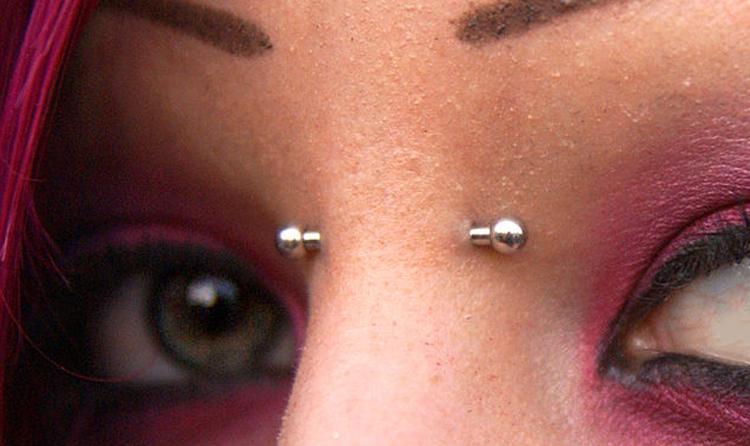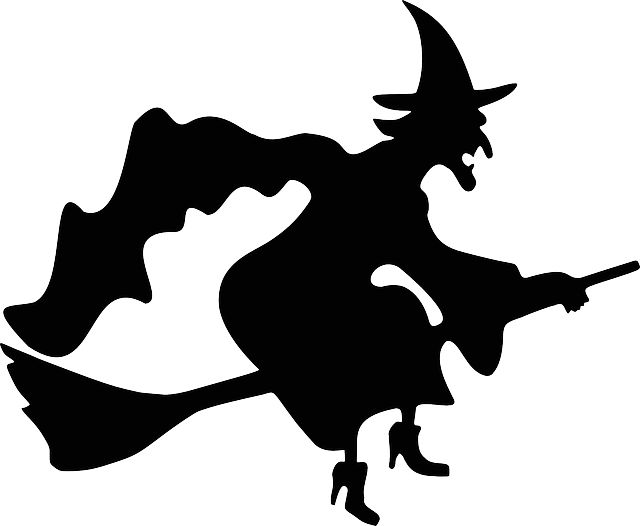Is nose piercing good for health? What to know

Whether it’s on the top of your nose or in a barely visible nostril, a nose piercing can make you feel like the most relaxed person anywhere you go.
Nose piercing
Nose piercing is an act of having a part or section of your nose pierced to wear jewellery afterwards. The piercing can go through the cartilage or the skin.
Types of nose piercing
There are several types of nose piercings you can get. Let’s look at five common types and what they include. Be aware that you are not limited to these five types. You can mix and match several of them if you want to give yourself an unforgettable look.
1. Nostril piercing

This piercing is put into your nostril and can place on either side. You can wear almost any jewellery type with this type of piercing, including rings, circulars, studs, and many other styles.
2. Bridge piercing

It seems like it would be painful to have this piercing because it located on the bridge of your nose, after all. That’s where all the bones and cartilage located. Although this piercing appears to go through this area, it only goes through the skin. This method leads to a faster healing time.
Nevertheless, caution should be exercised with this piercing: it has a higher chance of rejection than many other piercings, simply because of the depth of its penetration into the skin.
Rejection is what happens when your body rejects the piercing and tries to push it away as if it were doing so with a splinter or any other object considered a foreign object. If migration is suspected, you will see the piercing move closer to the surface of the skin, and if this happens, your piercing will be a thing of the past – it will have to remove.
To give yourself a fighting chance against rejection, you should opt for a curved piercing rather than a barbell piercing.
3. Septum piercing

Septum piercings are in the middle of the nose, between the two nostrils, just before the cartilage begins. Although these piercings are gaining in popularity, not everyone can get one.
Contrary to some nose piercings, these can hide if you need them. If your boss is talking about your appearance or you have an extensive job interview with a company, you can turn this piercing inside your nose and take it out when you have done it.
4. Septril piercing

You can get this piercing if you’ve ever had a septum piercing. It will go through there and out under the tip of your nose. These are not something you can do on a whim and can take years and cause a lot of pain.
5. Vertical puncturing

The vertical piercing goes above the tip of the nose to just below the bottom of the nose.
To work with your nose formation, you need to use a curved bar for vertical tip piercings. It is often rare.
6. Nasallang piercing

When you have this piercing, you have two nose piercings placed symmetrically on each side. These make no mistake, and it’s much more complicated than that. There are three holes to pierce.
Procedure
The first thing a piercer has to do is put on a pair of sterile gloves before he touches any part of your skin or any of the tools needed for the piercing.
Before he starts to pick up the needle, he must also disinfect the skin’s surface; he will pierce. He should mark the area he will hit to ensure that you are both on the same page about the jewellery’s exact location.
If you have any dubiety about the marking he has made, speak up immediately; otherwise, it will be too late to do anything. When this is done, he will be ready to start the piercing. He should use a hollow needle – He should never use a piercing gun.
Puncture guns cause much more tissue damage than necessary. A hollow needle is a better choice as it is easier on the skin and cartilage. Besides, it is the most hygienic option.
Even after cleaning, tiny particles of skin, fluid, and contaminants can lodge with puncture guns—the remains of anyone who has used the piercing gun before you can end up contaminating you.
Don’t let your piercer use a piercing gun instead of a hollow needle, run away!
Once the procedure is complete, he will wipe off the blood you have spilt and give you follow-up instructions that you must follow.
Ensure you have their phone number at the top of the sheet they gave you or take their business card before leaving. This way, you won’t have to find their phone number if you have any complications or questions during the healing phase.
How painful is a nose piercing?
It mainly depends on the place of the piercing and your reaction to the pain. If you can feel the pain like a boss, you may not feel too bad when you pierce your nose. On the other hand, it will hurt a little. And you’re a tough cookie if you say it doesn’t.
Nostril piercings are usually not too painful, but they will hurt a little more than an earlobe piercing.
The pain varies depending on the type of nose piercing you have. The most universally painful is the Septril piercing. If you don’t have perfect pain control, you might consider not using this type of piercing.
How does nose piercing hurt?
Once the piercing part is over, you will still be in pain. Your nose will be aching for the first few days or even the first two weeks. If you find it too painful to deal with, you can always take ibuprofen to ease the discomfort a little.
You can also try hot compresses, which will help relieve some of the pressure you may feel from any fluid build-up. This heat should trigger drainage, which will give you relief.
If the heat doesn’t help and you’re not a fan of pills, you can always try a cold compress on your piercing site as a way to ease the pain. Our advice is not to put ice directly on your nose. You will make the problem worse rather than better.
How much does a nose piercing cost?
For a nose piercing in general, you will have to pay between $50 and $100. These would include a piece of jewellery to start with, but the price would be higher if you want more fancy jewellery.
Simple nose piercings will be at the lower end of this price range. Piercings, such as septum and septril, will be priced more towards 100 to 150 dollars. Bridge piercings and nasal, nasallang and vertical nose piercings will reach the top of the price range.
In addition to the piercing you want, other factors can influence the price you pay. Whether it’s the reputation of your piercer or their level of experience, whether they practice in a large or small town, this can affect the cost of your nose piercing.
Although the procedure is relatively affordable, the overall cost can be much more expensive if you don’t take care of your new piercing. You may have to add doctor’s visits and the cost of antibiotics to this total if your piercing becomes infected because you are negligent in your care.
These costs can add up quickly. One visit to the doctor will give your piercer the right to look like a radical change.
Our best advice for reducing your nose piercing cost is to follow all the rules your piercer gave you.
Nose piercing cleaning and aftercare guide
There’s a reason why medical professionals put so much emphasis on the importance of handwashing. It’s nice for us, so before you touch your piercing, make sure you wash your hands first.
The second rule of thumb for controlling nose piercings is that you should clean them at least twice a day. If you can find time to clean them more than that, it might not be a worse idea, especially if you develop an infection or a bump on the skin.
At a minimum, you should soak the piercing site twice a day with the solution. You make it from 8 ounces of hot water and one-fourth teaspoon of sea salt.
After you mix everything thoroughly, you need to take a handful of cotton balls. Wet one of them and press it firmly against the piercing site until it dries a little. Then take another one and do the same thing until you have held the cotton balls at your skin for at least five minutes.
You can also buy ready-made piercing care sprays/solutions specifically designed to heal your new piercing as quickly and effectively as possible.
You will have to be observant about what cosmetics or cleansers you use on your face for the next few weeks. It would be perfect if you did not use anything irritating or drying on your piercing site. It will probably hurt, and it will slow down how quickly your face heals.
Lastly, until your nose heals well enough, you’ll want to consider staying out of long periods in the sun. If you get a lot of sunlight and end up getting a burn or even a deep tan, your skin can feel dry and itchy. It can lead to a lot of scratching, which is not suitable for a fresh nose piercing.
How long does Nose piercing take to heal?
Some nose piercings heal much faster than others. You will only have to wait two to four months for your nose rings to recover fully.
It will require more time for other nose piercings, such as bridge piercings, to heal. They can take up to 10 weeks and rarely heal completely by two months.
Septal piercings often take longer to heal. They can take six to eight months before they heal completely.
Nose piercing infection
It can be simple to get an infection when you have a nose piercing. After all, the nose is the perfect place for bacteria. It’s wet, and you’re constantly touching it with your dirty hands. If people around you are sneezing or coughing, you are breathing in bacteria and germs. Result of this, it should come as no surprise to anyone how much bacteria is in your nose all the time.
The thing you can do to prevent infections, wash your hands regularly before touching your nose piercing. It is essential with any piercing you have, but it is imperative with nose piercings.
To low the chance of infection, clean the puncture site twice a day with the saline solution.
The common symptoms of infection include redness, swelling, pain and pus. You may even have a fever and chills during horrible conditions.
Risks of nose piercing
You might get small bumps on your nose after you get your nose pierced. Usually, they go away without any problems, but it may take some time. The nodes are essentially scar tissue that will disappear over time.
Although it poses no threat to your overall health and well-being, it can be a crushing disappointment. You paid money for your piercing and went through all the pain, only to find out it needs to remove because it migrates to the surface of your skin.
Best jewellery for nose piercing
The most common starter jewellery used for nostril piercings is a twisted nose stud made of high-quality metals such as 14-karat gold, 18-karat gold or titanium. Hoops, such as beaded captive rings or seamless gold rings, are also often used. If you decide to go with a nose stud, those with a small ball on end are preferable; however, a tiny prong or gemstone setting can be stylish. Ensure your starter jewellery is large enough to adequately accommodate the swelling and light that it won’t pull on your new piercing.




